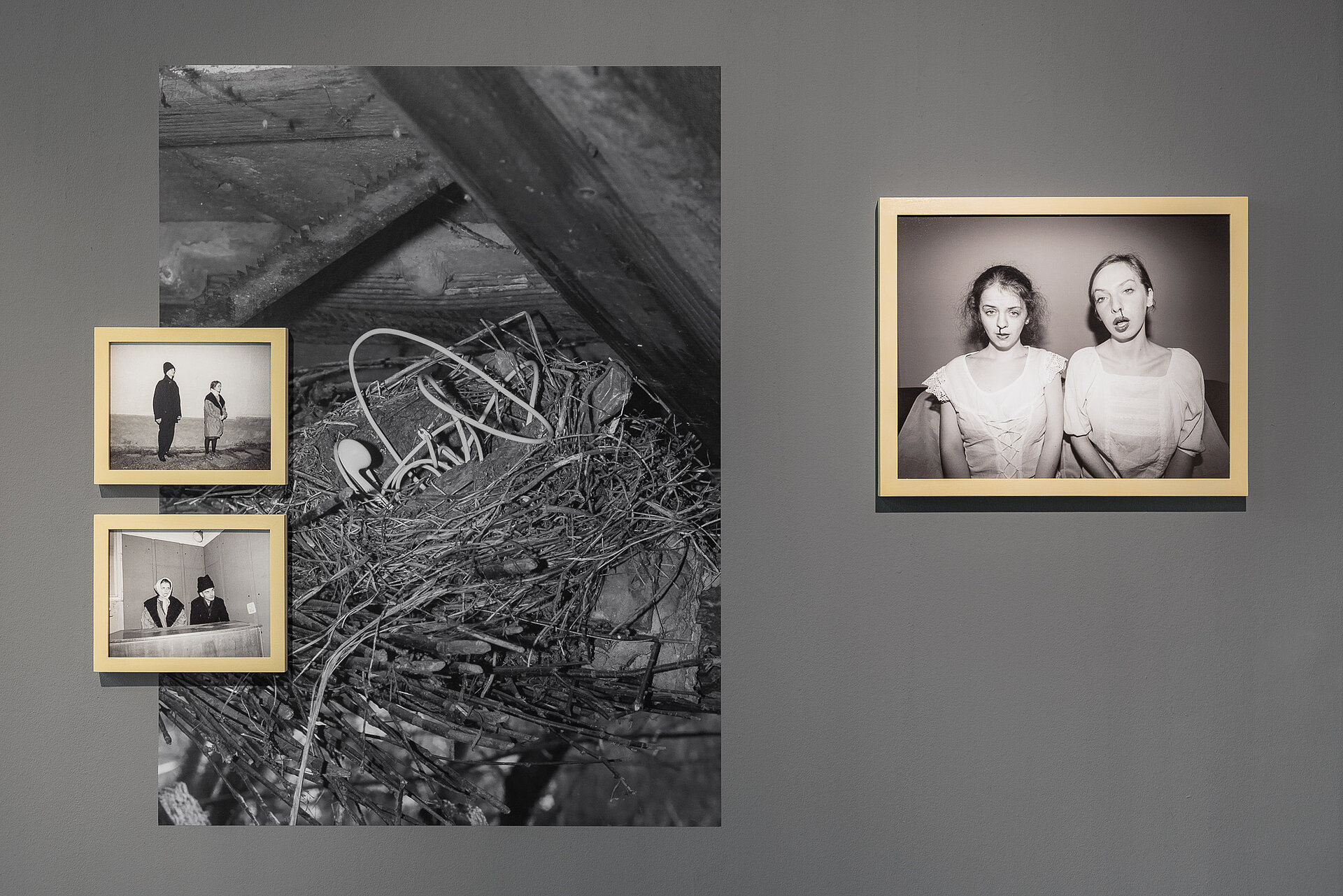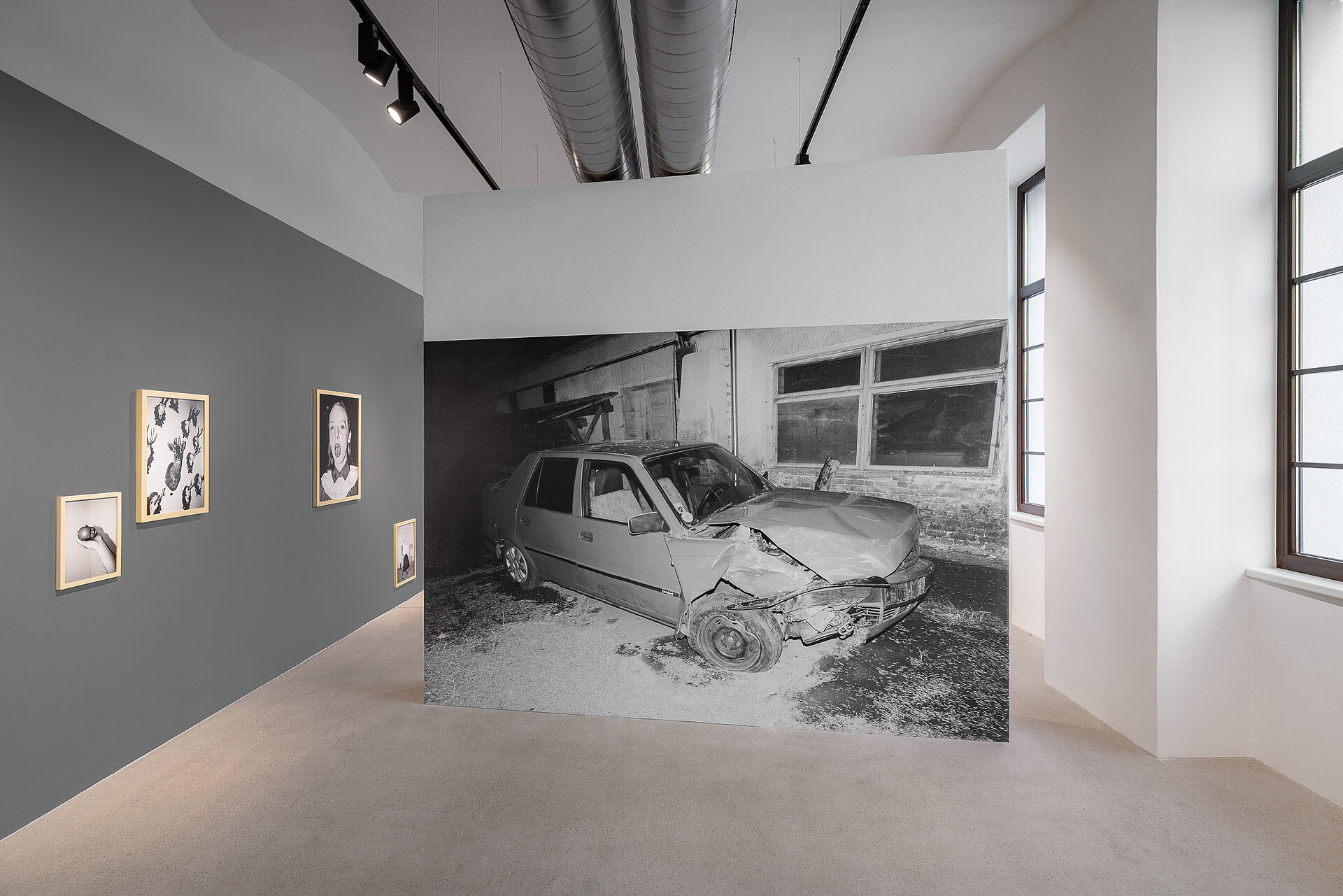Grenzwächter
Kincső Bede
What does it mean to inherit a history you did not choose? How does the memory of socialism continue to shape life in Eastern Europe today? And how can such complex, intergenerational experiences be made visible through photography? These questions lie at the heart of Kincső Bede’s series Three Colours I Know in This World (2019–21), which forms the core of her first solo exhibition in Austria at the Kahan Art Space. Bede grew up in the small town of Kovászna in Transylvania, Romania, as a member of the Hungarian minority of the Székler – a community whose history is marked by cultural diversity and a complex past. The exhibition title “Grenzwächter” (in English “border patrol“) reflects this heritage: historically, the Székler had secured the eastern border of the Kingdom of Hungary since the Middle Ages. In return, they received certain privileges, including inner autonomy as a territorially bound legal community. Their special status is also reflected in their traditional clothing, which Bede repeatedly incorporates into her imagery: intricately embroidered dresses with floral and geometric patterns, often accented with delicate lace, meet woolen vests and felt hats. The garments are a visible sign of the Székler’s autonomy and preserved traditions – a significance that becomes even more striking when viewed against the backdrop of the communist past. Through the lens of socialism, the original self-understanding of “Grenzwächter” took on an entirely different meaning: control under Nicolae Ceaușescu, surveillance by the Romanian secret police, the Securitate, and the sealing of borders – symbols of an authoritarian order in which both freedom of movement and private life were strictly regulated. This is made visible not only in Bede’s depiction of the material world of the socialist planned economy, present in every household – furniture, toys, electronics – but also in a sometimes brutal visual language: bloody noses, masked heads, surveillance settings. The series title itself refers to this history, taken from the first verse of Romania’s communist national anthem and alluding to the Romanian tricolor:Three Colours I Know in This World. From today’s perspective, the term “Grenzwächter” can also be read metaphorically: the German word Grenzecarries a double meaning, referring both to physical, political borders and to the invisible boundaries between generations, memories, and identities. Bede’s photographs, taken in her parents home, mediate between past and present – between the experiences of the older generation, who lived under socialism and often remain silent about it, and the younger generation, who live with the repercussions without having experienced such a constrained life themselves – between her family and herself. Kincső Bede’s multilayered visual worlds allow bridges to be built instead of reinforcing borders – a sensitivity that is more necessary than ever in the face of growing societal and European divisions.
Kincső Bede (*1995 in Covasna, Romania) studied at the Moholy-Nagy University of Art and Design and was awarded the Association of Hungarian Photographers’ scholarship in 2020, the same year she was named one of the Carte Blanche Students at Paris Photo. Since then, her work has been shown at Unseen Amsterdam (2021), Paris Photo (2021), the PhotoVogue Festival in Milan (2022), as well as in exhibitions at Saint Laurent in Paris and Los Angeles. She was nominated for the Esterhazy Art Award (2023) and most recently participated in OFF-Biennale Budapest (2025). Her works are held in international collections including the Victoria & Albert Museum, London, and the Hungarian National Gallery, Budapest, and have been featured in numerous magazines, such as The Art Newspaper, VOGUE, DATUM, and Der Greif. She is represented by TOBE Gallery, Budapest. The exhibition is curated by Mona Schubert art historian, curator, and writer. Her projects explore photography at the intersection of art, technology, and media history, photographic exhibitions since the 1960s and post-digital image practices. Since 2024, she has been a curator at FOTO ARSENAL WIEN, with a particular focus on the festival FOTO WIEN. In 2025, she completed her PhD at the University of Cologne on the topic “(Re-)construction of a Medium. Photography at documenta 6.” Previously, she worked as a research assistant in the DFG-research group “Dimensions of techne in the Fine Arts” at University of Graz and as an assistant curator at Fotomuseum Winterthur. She has contributed to numerous research projects, most recently as a stipend of Anna Polke Stiftung (2024).
Artist’s Tour with Kincső Bede: 4 October 2025 at 17:00 The artist Kincső Bede guides you through her exhibition “Grenzwächter“ (Border Guards) at the Kahan Art Space Vienna and opens up personal as well as historical perspectives on her works. Kincső Bede combines personal self-positioning with an exploration of collective memory in post-socialist Eastern Europe through her photography. As a member of the Hungarian Székler minority in Transylvania, Romania, she creates multilayered visual worlds where folkloric symbols, everyday objects from the Soviet planned economy, and intimate portraits intersect. This event is part of the Foto Wien Festival.
Curator's Tour with Mona Schubert: 27 November 2025 at 18:00 Curator Mona Schubert guides you through the exhibition “Grenzwächter“ at Kahan Art Space Vienna and gives insights to the works of Romanian artist Kincső Bede. |


